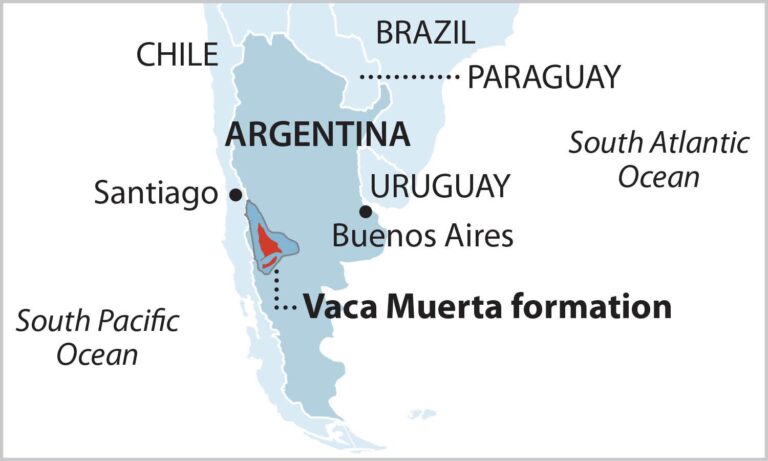After years of fluctuating fortunes and persistent challenges, Argentina has officially cemented its status as a major player in the South American oil sector. With surging production levels and strategic investments in key shale formations, the country is rapidly transforming its energy landscape and influencing regional crude oil markets. This emergence comes at a critical moment as global oil prices experience volatility, positioning Argentina as a noteworthy factor in both regional supply dynamics and broader market trends.
Argentina’s Strategic Investments Propel Crude Production to New Heights
Argentina’s recent surge in crude oil production can be largely attributed to a series of well-planned investments and policy reforms aimed at unlocking the country’s vast unconventional reserves. Focused primarily on the Vaca Muerta shale formation, international and domestic energy firms have injected billions into advanced drilling technologies and infrastructure upgrades, resulting in a production increase of over 30% in the last two years. These strategic moves not only bolster national energy security but position Argentina as a formidable competitor in the South American oil market.
Key factors driving this growth include:
- Enhanced extraction techniques with cutting-edge fracturing technology
- Government incentives that facilitate foreign investment and reduce bureaucracy
- Expansion of pipeline networks to streamline export capability
- Public-private partnerships that strengthen operational efficiency
| Year | Production (Thousand Barrels/Day) | Investment (Billion USD) |
|---|---|---|
| 2021 | 550 | 3.2 |
| 2022 | 720 | 4.5 |
| 2023 | 900 | 5.7 |
Impact of Argentina’s Oil Boom on Global Energy Markets and Pricing Dynamics
Argentina’s unprecedented surge in oil production has begun to ripple through the global energy landscape, challenging traditional power dynamics and influencing price stability. With the Vaca Muerta shale formation unlocking vast reserves, Argentina is not only meeting growing domestic demand but positioning itself as a significant exporter to both regional and international markets. This transformation is intensifying competition among major oil producers, particularly in Latin America, and compelling energy buyers to reconsider supply diversification strategies amid evolving geopolitical concerns.
Analysts observe that Argentina’s expanding output contributes to a subtle shift in pricing dynamics, with market participants anticipating increased fluctuations due to new supply variables. Key factors include:
- Supply Redistribution: South American crude is becoming more accessible globally, softening the influence of traditional Middle Eastern benchmarks.
- Strategic Partnerships: Growing collaborations between Argentina and emerging economies fuel new trade corridors.
- Cost Competitiveness: Lower exploration and operational costs in the region exert downward pressure on global prices.
| Metric | Pre-Boom (2020) | Post-Boom (2024) | Global Impact |
|---|---|---|---|
| Daily Production (barrels) | 400,000 | 1,200,000 | +2% to global supply |
| Export Destinations | 3 | 8 | Diversified markets |
| Average Production Cost ($/barrel) | 45 | 33 | More competitive pricing |
Experts Advise Increased Infrastructure Development to Sustain Growth and Export Capacity
Industry leaders emphasize that Argentina’s recent surge in oil production demands a parallel expansion in infrastructure to avoid bottlenecks that could stifle further growth. Current pipelines, storage facilities, and export terminals are nearing maximum capacity, raising concerns over their ability to handle the increasing crude volumes efficiently. To maintain its competitive edge in the South American oil market, experts recommend significant investments in:
- Pipeline expansions to facilitate smoother oil transport across key regions.
- Upgrading port facilities to handle larger tanker shipments and enhance export throughput.
- Modernizing storage infrastructure to prevent overflow during production spikes.
Without these critical improvements, Argentina risks logistical challenges that could delay shipments, increase costs, and reduce its attractiveness to global buyers. The following table highlights the current versus required infrastructure capacity indicators to sustain projected production levels over the next five years:
| Infrastructure Type | Current Capacity | Required Capacity (2029) |
|---|---|---|
| Pipelines (km) | 3,500 | 5,200 |
| Storage (million barrels) | 12 | 20 |
| Port Throughput (million barrels/year) | 45 | 75 |
Insights and Conclusions
As Argentina cements its position as a leading oil producer in South America, the country’s burgeoning energy sector is poised to reshape regional dynamics and influence global crude markets. With recent discoveries and increased investments fueling output, Argentina’s emergence offers new opportunities and challenges for both domestic stakeholders and international players. Moving forward, market watchers and policymakers alike will be closely monitoring how this South American powerhouse navigates the complexities of production growth, infrastructure development, and geopolitical factors amid fluctuating crude oil prices.




